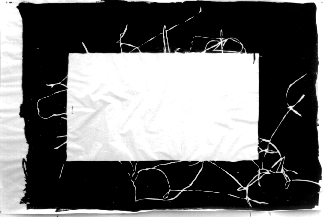I am titling this collection of photographs “Revivals” because they reveal what is still alive in the past. They are not historical ‘monuments’, but ‘documents’, as Foucault would have invited us to view them in his archaeological method of historicizing. The light cast on their material allows us to view them ‘in light of’ the present, as the living, feeling, desiring, and suffering human subjects who produced them, and eventually parted with them until they reached their present destination. In fact, the literal light and its refractive effusion in some of the photos suggest this theme.
Monuments call up our memory of the past, of events, of periods, and tragedies and triumphs. But as a network of references, the symbols in these documents can be reconfigured by the viewer, who authors what he observes and inscribes his own constellation of values into the text. This historical documentation is a living history that moves forward.
Against retrospective art, these pieces are introspective and open up possibilities for what new ways of living, producing, and cooperating we may develop in the future. The collection is not a ‘classification’ or ‘unified structure’ of pieces. It disperses their temporal fixity and opens a space for the viewer to take them apart, and in their discontinuity, to reorganize their elements according to his desires. The struggle between creator and spectator plays out on the field of art, and where the creator sets limits and patterns in his or her work, the spectator finds ruptures, interventions and subjective events of new meaning, of an altered relationship between the system of sign-relations at sites in the ‘structure’ where a surplus of desire overflows.
It is this flow that he must use as his substance, his material, to construct a new subjectivity and, as Walter Banjamin once said, to ‘tear the work’ out of its fixed temporal stage the socio-historical process, and re-situate it as a constitutive element in that process. The work is no longer a series, it is a series of series (what Foucault called a ‘table’ of macro and micro histories), a second-order art. The medium of photography - and photographing art - calls into question the techno-cultural capital flows of immaterial labor and in its ability to (re)produce the past, to ultimately change and subvert it.
What is progress? Agnes Heller told us the condition for its continued existence is our commitment to it. What is ‘new?' What is an ‘art object?’ Is it the finished work of a human in his material activity guided by an archetypal idea? Or is it the reflection of that image by the viewer? Or better, by the viewer who copies what he views for other viewers in a photographic interpretation? It is all and none of these things. Art is the continual, organic recursion that defines this process. Like sedimentary soil, new layers are added, united, separated, and intersect. jIt is the network of polyvocal histories, embedded in these products, and the interplay of their differences when they collide.
The militant leftist wants to transform labor by putting poetry into it. And with this revival of past human activity, we can perhaps edit and revise past syntax while adding another stanza or verse to the collective eulogy of past struggles, and their ode to a future human emancipation from that deplorable past.
Readers are encouraged to contribute their own photographs, and upon review, I may add them to the collection, making this a collaborative and collectively owned art project that is dynamic and ever-expanding.

No comments:
Post a Comment